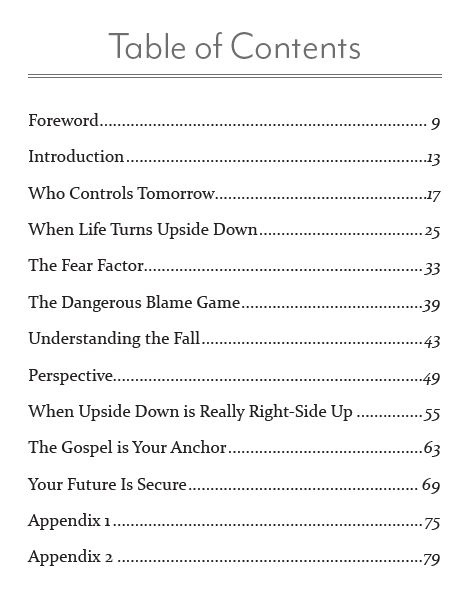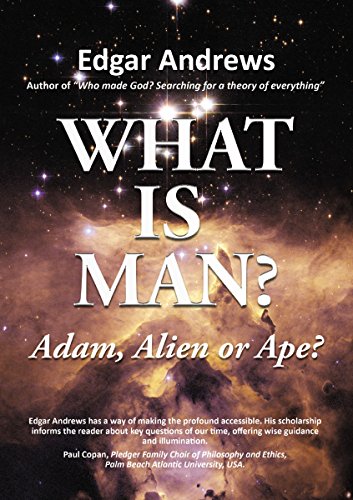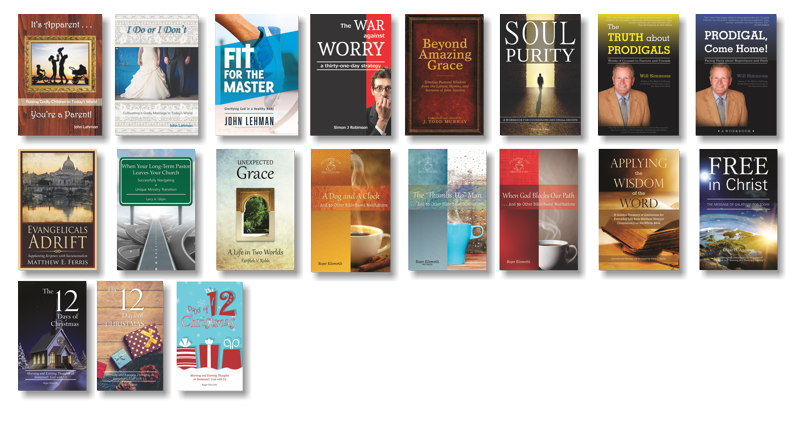Jim Continues His Thoughts. . .
Who Moved My Cheese?
 The cover design of the book caught my eye as well as the title. “Who Moved My Cheese?” it asked. It was a slender volume, no more than 96 pages as I recall, and it told the story of a number of mice that had to face change in life. The longstanding supply of cheese from which they have helped themselves is no more. “What is to be done in securing more cheese?” is the challenge facing these four mice. Written as a parable that takes place in a maze, the story engagingly describes Sniff and Scurry, and their associates, Hem and Haw, and how they go about finding more cheese. Spencer Johnson’s intention is to introduce readers to the concept of positive change and how to cope with it. The book makes for engaging reading.
The cover design of the book caught my eye as well as the title. “Who Moved My Cheese?” it asked. It was a slender volume, no more than 96 pages as I recall, and it told the story of a number of mice that had to face change in life. The longstanding supply of cheese from which they have helped themselves is no more. “What is to be done in securing more cheese?” is the challenge facing these four mice. Written as a parable that takes place in a maze, the story engagingly describes Sniff and Scurry, and their associates, Hem and Haw, and how they go about finding more cheese. Spencer Johnson’s intention is to introduce readers to the concept of positive change and how to cope with it. The book makes for engaging reading.
Shifting paradigms are always interesting, especially when they involve adjusting to new ways. Just because something has always been done in a particular way is no guarantee that such a way will always work—or that it cannot be improved.
When I first purchased my AB Dick printing press in the 1990s (more HERE), there was really only one way to produce books cost-effectively: by printing quite a lot at a time. The prevailing philosophy in the printing industry was to find a sweet-spot—establishing a printing number that was high enough to enable unit price to be attractive but not causing the publisher to have to mortgage his house to pay for the print run and then take take forever to sell the books—and not too short a print run to sell all copies too quickly. Of course, the fact that I owned a printing press did give me a strategic advantage at least when it came to the printing of sales leaflets and catalogs, but book printing was really a larger and more complex operation than my press would be able to manage.
After I relocated to Britain, the first publisher I worked for in the UK operated on the principle of having access to a fairly big warehouse to keep all the books safely stored during the time they were being fed out to the marketplace. Paper and print does not accrue in value under those circumstances, and it can be challenging to keep a large warehouse tidy and functioning in an orderly way. Maybe that got my thinking going about whether there was a better, a different way…
Other publishing wisdom I encountered in the early 2000s went like this: “We’ll print books in large quantities, but first find publishing partners—that is, buyers with whom we can engage in a kind of strategic alliance.” I liked that. It meant that the financial load could be spread and shared between two or more parties, stakeholders in each instance, and created a strong and efficient force for buying print and then for moving it into the market. I do still very much favor this approach, and I think it works really well under the right conditions.
Enter Amazon
 The “Big A” has changed a lot of things. At one time, nobody took Amazon too seriously, but not so anymore. Amazon’s ability to operate on a relatively low overhead and to have negotiated specially preferential, volume-related relationships with shippers has dealt the death knell to many vendors who had maybe become comfortable with the status quo. The reality is that people’s buying habits have changed and continue to do so. Most people today are quite relaxed in making online purchases.
The “Big A” has changed a lot of things. At one time, nobody took Amazon too seriously, but not so anymore. Amazon’s ability to operate on a relatively low overhead and to have negotiated specially preferential, volume-related relationships with shippers has dealt the death knell to many vendors who had maybe become comfortable with the status quo. The reality is that people’s buying habits have changed and continue to do so. Most people today are quite relaxed in making online purchases.
So What About a New Author?
Where does a new author, someone not yet published, fit into this shifting paradigm? There are many variables, but it’s usually fair to say that the new author is relatively without connections and can offer no track record to a prospective publisher. Jack Canfield (co-originator of the Chicken Soup for the Soul books) records how he had to work exceptionally hard to find a publisher who was prepared to take the risk with his publishing idea. But that publisher was not unhappy with the outcome. (Canfield has subsequently had several New York Times bestsellers to his credit.)
It’s a hop, skip, and jump (at least in one sense) for an unpublished author to fly solo, and there is significant temptation to do so. The ease with which self-publishing can take place has given newbie authors a lot of rope. Some such authors make good use of the rope for hanging themselves, speedily finding an in-law to help with the editing, a friend to design the cover, and a teenager to help with the uploading of files to the printer; others are more cautious and with due circumspection do a better job. The point is that homemade usually looks homemade. I’ve seen enough to make me queasy!
But let me get back to my story and to tell you why I publish. . . and to address three important questions that need to be kept under consideration.
Below: Some of the books I have published so far

1. The Question of Editing, Design, and Production Quality
It soon became apparent that I could easily help a new author (or an established one) bring a very presentable book into print. And that was gratifying for me as well as for the author! Editing and book design are closely related, and I found that even as I was working with an author, ideas were coming to me in terms of how we could develop the work to make it look like a nice project once it was in print.
Any would-be self published author MUST think carefully about how to achieve an outstandingly good result!
2. The Question of Financial Risk
So, now finding myself in the position of working with authors and others in the publishing realm, but without a full-time employer, my instinct was to push forward and to push hard in developing a new model, one that would facilitate the kinds of people who are gifted writers, but who, for whatever reason, are not able to achieve success with a mainstream or established publisher. One of the most likely things that will happen to a self-published author is that he or she will end up with numbers of cartons of a well (or badly) produced book in the garage. The first ten or twenty copies were relatively easy to sell (or give away as complimentary items); and then things just dried up. That can be an expensive mistake!
DSR Printing
 So I reasoned that we could find a way around that by using digital short-run printing (costs have become much lower in recent years) so that only a small number of books at a time would need to be produced. Wow! That made such a difference to how people saw things! In fact, I coined the term “Perpetually in Print” (more info HERE). An author’s book never has to go out of print. And an author never has to face the sight of cartons of unsold print in the garage gathering dust!
So I reasoned that we could find a way around that by using digital short-run printing (costs have become much lower in recent years) so that only a small number of books at a time would need to be produced. Wow! That made such a difference to how people saw things! In fact, I coined the term “Perpetually in Print” (more info HERE). An author’s book never has to go out of print. And an author never has to face the sight of cartons of unsold print in the garage gathering dust!
Then I turned my attention to how I could help people promote (and therefore sell) their books. That was fun, if you find Facebook and such portals to be fun! This is all about enabling an author to use his or her voice and to achieve maximum amplification through low-cost or no-cost promotional portals. But that’s for another post I’ll write another time!
3. The Question of Distribution Efficiency
But that still did not quite solve the challenge of global distribution. I loved it that my US-based clients could enjoy success in selling their books in the States, but what about my clients in the UK? Well, I am happy to report that there turned out to be a solution—a very good solution to that, too, and one of the print-and-distribute models that I now use is highly efficient in making my authors’ books available anywhere in the world, usually available to ship within just a couple of days.
It was pleasing to be able to see good and reasonable answers to each of these challenging questions as I moved forward in my thinking.
Doing It the Right Way
 One of my clients–a self-published author (in fact, he has since started his own imprint with my involvement)–was happy to report to me that when he made his book publicly available, one of his associates spoke these words to him: “Dewey, this beautiful book is self-published, and yet it does not look self-published.” And that is exactly the point! An author who has invested years and years, who has toiled tirelessly to produce a manuscript surely deserves the very best treatment and the prospect of getting a really pleasing outcome from such labors!
One of my clients–a self-published author (in fact, he has since started his own imprint with my involvement)–was happy to report to me that when he made his book publicly available, one of his associates spoke these words to him: “Dewey, this beautiful book is self-published, and yet it does not look self-published.” And that is exactly the point! An author who has invested years and years, who has toiled tirelessly to produce a manuscript surely deserves the very best treatment and the prospect of getting a really pleasing outcome from such labors!
The “Either/Or” and “Both/And” Relationship
There is something of a watershed emerging in publishing. One the one side, there is the traditional model, a model that I love and that continues to be effective. I work closely with established publishers, publishers who have been around for a long time and will continue to be so. But there is a new way of publishing, and it is imperative that established publishers recognize the new dynamic and, where appropriate, make use of it for some of their printing needs. Of course, for the newbies who are careful enough not to hang themselves on the long length of rope suddenly available, judicious use of new technologies and systems provide the enabling to bring them into new realms of effecitveness.
To one of my clients, I recently used the analogy of what the skies are like to aircraft. Her husband, a retired doctor, loves flying his single-engine, four-seater Cessna 182. A 182 is not a Boeing 747. But it flies in the same skies, and uses the same principles of thrust and lift in order to stay airborne, and has many of the same capabilities. And so it is that she, a self-published author who may be unknown to many, is able to appear side by side with the greats when it comes to platforms such as Amazon, and the public response to her writing (expressed in customer ratings and reviews) has much the same visibility authors who may be much better known.
Ask me whether I am an either/or person or a both/and person, and I will tell you immediately that I am the latter, especially when it comes to publishing. And the interesting thing is that the two can sometimes morph together in related projects. An author who is going to enjoy spectacular success will most likely have his or her books printed many at a time, and published and promoted by a publisher and distribution network that can accommodate the speed and urgency of demand, and where the cost of sale relative to the final selling price dynamic is in a satisfactory and realistic relationship. Supply and demand factors often determine this quite naturally.
But there is so much to be said for the author whose books are just quietly selling through key portals, and where the ongoing activity is sustained through quiet and unobtrusive means. You might not find such books in window displays or endcaps in bookstores, and the authors might not be doing public signings, but the reality is that the reader interest and demand is there, and it fuels the life of the book over a good length of time.
There is More to Come. . .
I cannot complete this cluster of posts without sharing a little about some of the books I have published, and introducing you to some of the authors and the fun we had in getting the books from concept to completion. So look out for the next post or two in this series!
 John A. (Jay) Younts is the author of this book as well as other materials on parenting and the Christian life. He is an experienced blogger, having served Shepherd Press in this capacity for several years. He has been teaching and speaking on current issues for over thirty years. He serves as a ruling elder at Redeemer Associate Reformed Presbyterian Church in Moore, South Carolina. He and his late wife, Ruth, have five adult children.
John A. (Jay) Younts is the author of this book as well as other materials on parenting and the Christian life. He is an experienced blogger, having served Shepherd Press in this capacity for several years. He has been teaching and speaking on current issues for over thirty years. He serves as a ruling elder at Redeemer Associate Reformed Presbyterian Church in Moore, South Carolina. He and his late wife, Ruth, have five adult children.


 The author’s can-do spirit breathes optimism through the book. At times, I found myself disagreeing with some of his faith values—I am protestant to the core—but I found myself loving his sincerity and zeal for faith as he knows it, and especially his commitment to a Judeo-Christian worldview and its outworking in the form of faith, family, and a good, solid work ethic—typical of a classical conservative. His treatment of the so-called squeegee men in NY is classic—Charge them for jaywalking, was his take on it. Nobody had thought of that!
The author’s can-do spirit breathes optimism through the book. At times, I found myself disagreeing with some of his faith values—I am protestant to the core—but I found myself loving his sincerity and zeal for faith as he knows it, and especially his commitment to a Judeo-Christian worldview and its outworking in the form of faith, family, and a good, solid work ethic—typical of a classical conservative. His treatment of the so-called squeegee men in NY is classic—Charge them for jaywalking, was his take on it. Nobody had thought of that!




 Daily Readings books have a special place in my heart. There are two that have been under my purview this year, both relatively late in the year.
Daily Readings books have a special place in my heart. There are two that have been under my purview this year, both relatively late in the year. A good friend and former colleague connected me with new friends in TMAI–The Masters Academy International–in California who were in the final stages of preparing a large devotional book with multiple authors for publication. Would I help guide it through the process? The timing was tight, but the outcome is a beautiful (nearly 400 page) book, Declaring His Glory among the Nations. An edition of this book is available on Amazon
A good friend and former colleague connected me with new friends in TMAI–The Masters Academy International–in California who were in the final stages of preparing a large devotional book with multiple authors for publication. Would I help guide it through the process? The timing was tight, but the outcome is a beautiful (nearly 400 page) book, Declaring His Glory among the Nations. An edition of this book is available on Amazon 


 Dr. Francois Carr is based in Pretoria, South Africa, and has a global ministry in calling people to Christ and a consecrated walk with Him. One of his earlier books, Lead Your Family in Worship, had gone out of print. Francois reached out to me with the question: How could this book be brought back into print? Well, we found a way! We did a couple of prototype runs and the book has a few tweaks to go, and we expect to launch the agreed final version early in 2020.
Dr. Francois Carr is based in Pretoria, South Africa, and has a global ministry in calling people to Christ and a consecrated walk with Him. One of his earlier books, Lead Your Family in Worship, had gone out of print. Francois reached out to me with the question: How could this book be brought back into print? Well, we found a way! We did a couple of prototype runs and the book has a few tweaks to go, and we expect to launch the agreed final version early in 2020.  The Man in the Gap Martin Holdt was my pastor for many years in South Africa. A good and godly man, the story of his life is more than worthy of being told. Friends Rex and Esta Jefferies in South Africa have labored hard to prepare a biography, and they and I have been exchanging files for a couple of years or more to get the text prepared for publication. We anticipate launching this book in the first quarter of 2020. Dr. Joel Beeke in the Foreword describes this as a “must-read” book!
The Man in the Gap Martin Holdt was my pastor for many years in South Africa. A good and godly man, the story of his life is more than worthy of being told. Friends Rex and Esta Jefferies in South Africa have labored hard to prepare a biography, and they and I have been exchanging files for a couple of years or more to get the text prepared for publication. We anticipate launching this book in the first quarter of 2020. Dr. Joel Beeke in the Foreword describes this as a “must-read” book!
 I first met Professor Edgar Andrews in 1999. I recall him, distinguished, articulate, erudite—in many ways, just what you might expect a professor to be. At the time, he was chairman of Evangelical Times and Evangelical Press. I had just relocated to England and was finding my feet in a new climate, adjusting to a new work situation, meeting new friends, discovering the joys of navigating around English traffic roundabouts (“Who gives way to whom, or do you just pray and take a chance?”) and experiencing many other new things. Our pathways would cross at occasional board meetings and when he would come to the Faverdale office in Darlington to oversee the production of the monthly paper.
I first met Professor Edgar Andrews in 1999. I recall him, distinguished, articulate, erudite—in many ways, just what you might expect a professor to be. At the time, he was chairman of Evangelical Times and Evangelical Press. I had just relocated to England and was finding my feet in a new climate, adjusting to a new work situation, meeting new friends, discovering the joys of navigating around English traffic roundabouts (“Who gives way to whom, or do you just pray and take a chance?”) and experiencing many other new things. Our pathways would cross at occasional board meetings and when he would come to the Faverdale office in Darlington to oversee the production of the monthly paper. I have worked with Edgar in lightly editing, reformatting, and republishing his most helpful book on Galatians (EP Books used to have it in the Welwyn Commentary Series—though Great Writing Publications it is titled Free in Christ—The Message of Galatians for Today) (more about that in another blog entry another time) and it’s on my radar soon to have his excellent commentary on Hebrews—A Glorious High Throne—back in print, also in the Great Writing Publications imprint.
I have worked with Edgar in lightly editing, reformatting, and republishing his most helpful book on Galatians (EP Books used to have it in the Welwyn Commentary Series—though Great Writing Publications it is titled Free in Christ—The Message of Galatians for Today) (more about that in another blog entry another time) and it’s on my radar soon to have his excellent commentary on Hebrews—A Glorious High Throne—back in print, also in the Great Writing Publications imprint.









 The cover design of the book caught my eye as well as the title. “Who Moved My Cheese?” it asked. It was a slender volume, no more than 96 pages as I recall, and it told the story of a number of mice that had to face change in life. The longstanding supply of cheese from which they have helped themselves is no more. “What is to be done in securing more cheese?” is the challenge facing these four mice. Written as a parable that takes place in a maze, the story engagingly describes Sniff and Scurry, and their associates, Hem and Haw, and how they go about finding more cheese. Spencer Johnson’s intention is to introduce readers to the concept of positive change and how to cope with it. The book makes for engaging reading.
The cover design of the book caught my eye as well as the title. “Who Moved My Cheese?” it asked. It was a slender volume, no more than 96 pages as I recall, and it told the story of a number of mice that had to face change in life. The longstanding supply of cheese from which they have helped themselves is no more. “What is to be done in securing more cheese?” is the challenge facing these four mice. Written as a parable that takes place in a maze, the story engagingly describes Sniff and Scurry, and their associates, Hem and Haw, and how they go about finding more cheese. Spencer Johnson’s intention is to introduce readers to the concept of positive change and how to cope with it. The book makes for engaging reading. The “Big A” has changed a lot of things. At one time, nobody took Amazon too seriously, but not so anymore. Amazon’s ability to operate on a relatively low overhead and to have negotiated specially preferential, volume-related relationships with shippers has dealt the death knell to many vendors who had maybe become comfortable with the status quo. The reality is that people’s buying habits have changed and continue to do so. Most people today are quite relaxed in making online purchases.
The “Big A” has changed a lot of things. At one time, nobody took Amazon too seriously, but not so anymore. Amazon’s ability to operate on a relatively low overhead and to have negotiated specially preferential, volume-related relationships with shippers has dealt the death knell to many vendors who had maybe become comfortable with the status quo. The reality is that people’s buying habits have changed and continue to do so. Most people today are quite relaxed in making online purchases.



Recent Comments